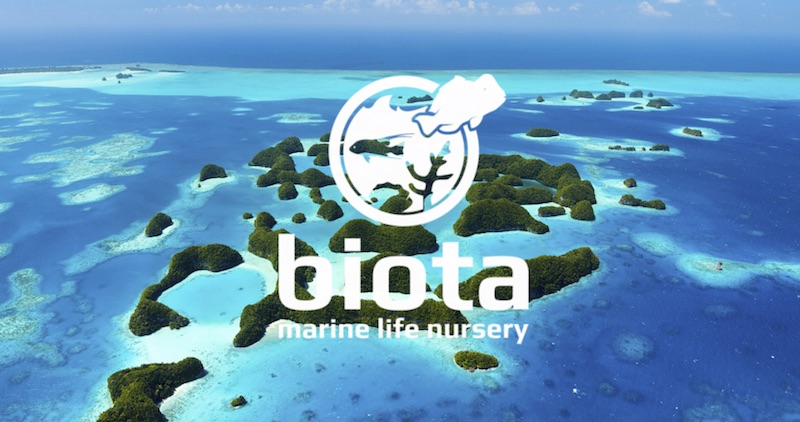Tom Bowling and Biota Marine are the aquarium hobby’s two strongest link to Palau, and the multitude of wonders and cool creatures that can be found there. Thankfully, Tom has been a busy little bee over in Palau, successfully culturing a variety of reef fish including humphead parrotfish, clown triggerfish, a 4-Pack of Eviota dwarf gobies, and even a few species of corals.

More recently, Tom along with Kevin Gaines have devised a completely new model of sustainability in the aquarium hobby with the shortest supply chain. Their new enterprise, Biota Aquariums, aims to supply new users with an ideal first aquariums, complete with captive raised fish and corals, and all the proper equipment to be successful with your first marine tank.
If you’re reading Reef Builders, you’re more likely an advanced hobbyist or professional aquarist, and the Biota Aquarium is not for you. However if you’ve been reefing for a number of years, perhaps you don’t want to teach Reef Aquarium 101 for the umpteenth time in your life, so Biota Aquarium is the perfect recommendation for our close friends to get started in the hobby, the right way, the first time.

Furthermore, Biota Aquariums is looking to have a short supply chain with their captive raised fish, now offering a limited catalog of unique captive bred fish including Mandarin ‘gobies’, and the Palau endemic Amblygobius linki goby, an attractive sand sifting goby which is in between the size of a rainford and a dragon goby.
We sat down with Tom Bowling for an in depth conversation on aquaculture, Biota, Palau, a host of reef-related topics which should make for pretty good listening.
P.S. If I have a spaced out look in the video that’s because the camera we used for the recording was actually sitting on of a tank filled with many juicy corals at Aquatic Art, and I spent too much time staring at a beautiful pair of yellow mouthed Goniopora that were swaying in current.
https://www.facebook.com/reefbuilders/videos/10157036324765066/?video_source=pages_finch_main_video



